Locomotives of New Zealand
Listed below are New Zealand locomotives currently in service with KiwiRail, as well as a list of preserved locomotives at organisations around the country. Each has a small photo, description and link to a Wikipedia article on each. Some tips to tell similar classes apart are also included.
In service
Diesel
Locomotives

DC class
Number range: 4006-4876, 4916-4951 (Hutt-built)
Entered service: 1978 (as DC class)
Power output: 1,062kW (645C), 1,230kW (645E)
Tractive effort: 140kN
Rebuilt from the DA class between 1978 and 1983, the class is still in use today on freight services. Out of the original 85 locomotives built, only a handful remain in service as the class is slowly being phased out. The DCP class originally denoted locomotives owned by Tranz Scenic 2001 Limited, but now denotes those locomotives fitted with bogie strops to prevent the bogies separating in a derailment.

DF class (1979)
Number range: 6006-6317 (DF), 7008-7348 (DFT)
Entered service: 1979 (as DF class), 1992 (as DFT class)
Power output: 1,230kW (DF), 1,800kW (DFT)
Tractive effort: 198kN
The DF class was built as a modern version of the DC class, sharing the same prime mover, but with a Co-Co wheel arrangement, enabling the class to make greater use of its power. In 1992, DF 6260 was turbocharged and altered, and re-entered service as DFT 7008, with the other 29 locomotives following later. DFB class locomotives are a standard DFT fitted with the BrightStar wheel slip control system and a fire suppression system for passenger service.
Tip: Note the upper headlights. The DF class's lights are one over another, while on the DBR, DC and DX they are horizontal. Also, all DFTs and DFBs have a small chute behind the cab on the left (assistant's) side of the locomotive.

DH class
Entered service: 1978
Power output: 672kW
Tractive effort: 146kN
Originally an order for Philippine National Railways, they were purchased by the NZR as a heavy shunter for Auckland port work. They are still used in Auckland and Tauranga for heavy shunting, now fitted with multiple-unit capability.
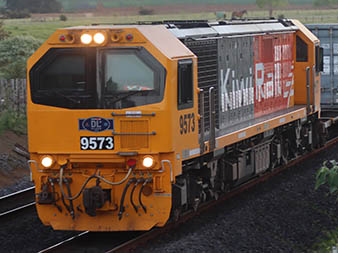
DL class
Entered service: 2010
Power output: 2,700kW
Purchased by KiwiRail and first delivered in 2010, these were the first brand new locomotives to be introduced since the DF class over 30 years previously. Currently the most powerful and common diesel locomotive in New Zealand, the class sees service in the North Island on heavy freight trains. 63 locomotives are currently in service.
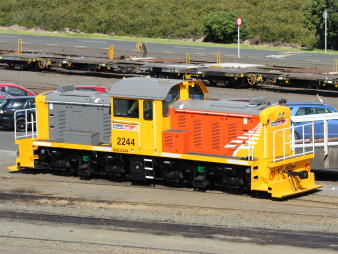
DSC class
Entered service: 1958
Power output: 315kW
Tractive effort: 46kN
Purchased as a heavy shunter to replace smaller DS and DSA class shunting locomotives and smaller steam locomotives. A second version was built by NZR powered by two Leyland diesel engines instead of the Rolls-Royce engines. Only NZR-built locomotives remain in service.
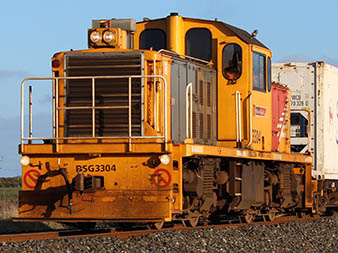
DSG class
Entered service: 1981
Power output: 700kW
Tractive effort: 130kN
The DSG class forms the basis of KiwiRail's heavy shunting and yard work.

DSJ class
Entered service: 1984
Power output: 343kW
This class is essentially a single-engined version of the DSG class. The first locomotive was imported assembled in 1984, with the remainder assembled at Addington Workshops.
Tip: The DSC, DSG and DSJ classes all look similar, but note the headlights. On the DSC, the headlights are part of the body, while on the DSG and DSJ, they are mounted on a small plate above the body. The DSJ class also has an off-centre cab and a radiator on one end only.

DX class
Number range: 5016-5520 (DX), 8007, 8022 (DXR)
Entered service: 1972
Power output: 2,050kW (standard), 2,460kW (uprated, some members), 2,349kW (DXR)
Tractive effort: 259kN
Introduced due to the need for a more powerful locomotive on the North Island Main Trunk. DX 5362 was rebuilt as DXR 8007 in 1993, followed by DX 5235 into DXR 8022 in 2005. All DX locomotives now exist as DXB, DXC or DXR class locomotives. The DXB class is fitted with heavier drawgear, uprated engines, new cabs and BrightStar, while the DXC class additionally has lower air intakes for use in the Otira Tunnel.
Tip: The DX class is much longer than the DC class, and the front hood is shorter as well.
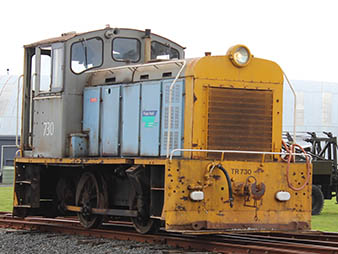
TR class
Entered service: 1936
Power output: 78kW - 112kW (various versions)
A "catch-all" class, with many different manufacturers building various versions of the class. A handful remain in service for KiwiRail, including TR 56, their oldest locomotive. The class is used in smaller yards and private sidings.
Diesel Multiple Units

ADL class
Number range: 801-810 (ADL), 851-860 (ADC)
Entered service: 1982 (Perth), 1993 (Auckland)
Power output: 2x 205kW, one engine per bogie per motor carriage
Purchased along with the ADK class in 1993, intended to revive the Auckland rail network. The two classes were successful, and contributed to a rise in patronage from their introduction. The class was refurbished in 2002 in the new MAXX livery. The class last ran services between Papakura and Pukekohe, and were withdrawn in August 2022 and currently waiting for a buyer.
Electric
Locomotives

EF class
Entered service: 1988
Power output: 3,000kW
Currently the most powerful locomotive in New Zealand and the only electric locomotive in operation. The class was introduced for the North Island Main Trunk electrification in 1988, and many still run today. Some of the class are undergoing refurbishment and upgrading.
Electric Multiple Units
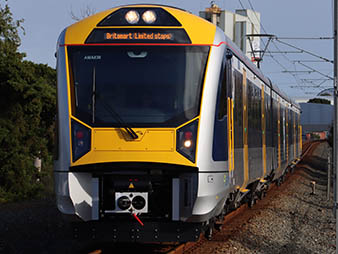
AM class
Number range: 103-714, 810-973 (all carriages)
Entered service: 2014
Power output: 1,520kW (per unit)
Auckland's first class of EMU. Carriages are classified AMP for the motor car with pantograph, AMT for the centre trailer car, and AMA for the motor car without pantograph. Also referred to as "AM" for the unit as a whole.

FP class ("Matangi")
Number range: 4103-4610, 5010-5396 (FP, FT)
Entered service: 2010
Power output: 680kW
Named "Matangi". Operates in the electrified area of the Wellington suburban network. Introduced to replace the DM and EM classes.
Preserved
Steam

A class (1873)
Number range: 21, 22, 60-71
Entered service: 1873
Last withdrawal: 1906
Tractive effort: 13.7kN
A class of three similar types of locomotive, with similar specifications but differing in details. A small tank locomotive used by the Public Works Department and on smaller branch lines.

A class (1906)
Subclasses: AD
Number range: 423, 428
Entered service: 1906
Last withdrawal: 1969
Tractive effort: 76kN
Designed to replace less powerful locomotives in the South Island, and in anticipation of the increased loads in the North Island. One each preserved by Glenbrook Vintage Railway and Weka Pass Railway.

AB class
Number range: 608-838
Entered service: 1915
Last withdrawal: 1969
Tractive effort: 89.1kN
First entering service in 1915 and went on to become the largest class of steam locomotives to operate. Ten were rebuilt from the WAB class, a tank version of the AB class. One each preserved by Steam Inc., Mainline Steam, Pleasant Point Railway & Historical Society, Rimutaka Incline Railway Heritage Trust and MOTAT, and two preserved by the Kingston Flyer.
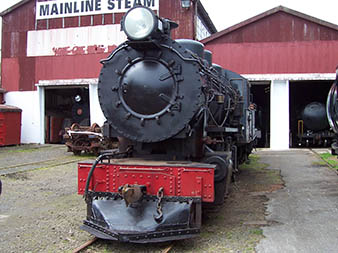
BA class
Number range: 148, 497-500, 551-555
Entered service: 1911
Last withdrawal: 1969
Tractive effort: 82.5kN
Designed primarily for use on freight trains in the South Island. With the arrival of more powerful locomotives from the 1920s, the class were largely confined to heavy shunting and shorter runs around Dunedin. One preserved by Mainline Steam.

BB class
Number range: 55, 109, 143, 144, 147, 167, 169, 171, 197, 222, 618-637
Entered service: 1915
Last withdrawal: 1968
Tractive effort: 93.1kN
Ordered to replace several classes of smaller locomotives in the North Island, the class was similar to the B and BA classes. From the 1930s, the class was modified for shunting and took on heavier shunting duties. One preserved by Mainline Steam.

C class (1873)
Number range: 1-577, changed multiple times
Entered service: 1873
Last withdrawal: early 1920s
Tractive effort: 23.1kN
Purchased due to the need for motive power for a newly constructed national network. Initial duties were aiding in construction of lines before being used on general freight and passenger services. Numbering of the locomotives changed multiple times partly because of isolated sections using different numbering schemes. One each preserved by Silver Stream Railway and the Westport Railway Preservation Society.

C class (1930)
Number range: 845-868
Entered service: 1930
Last withdrawal: 1968
Tractive effort: 68.2kN
Built for heavier shunting duties than the smaller locomotives currently in use were capable of. One each preserved by Glenbrook Vintage Railway and the Ferrymead Railway.
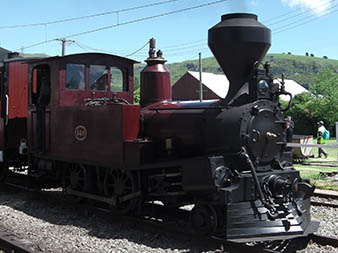
D class (1874)
Number range: 6, 16, 18, 46-51, 108-109, 130-131, 137-145, 149, 169-171, 195-98, 221-222, 240, 315, 578
Entered service: 1874
Last withdrawal: 1927
Tractive effort: 20.9kN
Used on light duties during NZR service, with many sold to private operators after leaving NZR service. One each preserved by Pleasant Point Museum and Railway, Ferrymead Railway and Ocean Beach Railway, one each on static display at Helensville and Kaitaia, and two by Silver Stream Railway.

E class (1872)
Number range: unknown
Entered service: 1872
Last withdrawal: 1906
Tractive effort: 35.6kN
A double Fairlie type locomotive, at first built to operate trains on the Dunedin and Port Chalmers Railway, then in 1875 another six were built for NZR. One on static display at the Otago Settlers Museum.

F class
Number range: 12-233
Entered service: 1872
Last withdrawal: by 1968
Tractive effort: 25.5kN
The first class of locomotives ordered by the central government, with a total of 88 locomotives built. Used everywhere on the rail network, and still being used as shunters into the 1960s. A number of F class locomotives are preserved at railways around the country, including four preserved as diesel-electric conversions.

H class
Number range: 199-204
Entered service: 1878
Last withdrawal: 1955
Tractive effort: 55.8kN (driving), 49kN (adhesion)
Built for use on the Rimutaka Incline from its opening in 1878 until closure in 1955. The locomotives operated using the Fell system, with horizontal wheels gripping onto a centre rail up the incline. One on static display at the Fell Engine Museum.

J class (1939)
Subclasses: JB
Number range: 1200-1239
Entered service: 1939
Last withdrawal: 1967
Tractive effort: 111kN
Primarily designed to provide a mixed traffic locomotive more powerful than the AB class, though also saw use on express passenger trains. Originally fitted with streamlining, which was removed from 1947. A number were converted to oil burning and reclassified JB after World War II due to coal shortages. One preserved by Steam Inc., and two preserved by Mainline Steam.

JA class
Number range: 1240-1274 (Hillside), 1275-1290 (North British)
Entered service: 1947
Last withdrawal: 1971
Tractive effort: 111kN
The Hillside locomotives were built as an improvement on the J class. Additional locomotives were built by North British as additional motive power was required before dieselisation had begun. JA 1274 was the last steam locomotive built by, and for, NZR. One each preserved by the Glenbrook Vintage Railway, The Plains Vintage Railway & Historical Museum, Steam Inc. and the Otago Settlers Museum, and three preserved by Mainline Steam.
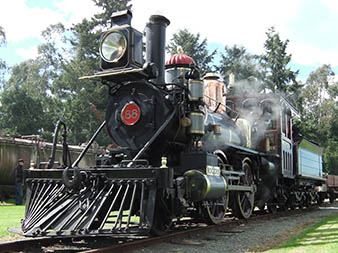
K class (1877)
Number range: 87-88, 92-97
Entered service: 1877
Last withdrawal: 1927
Tractive effort: 27.8kN
The first example of American-built locomotives in New Zealand. Three locomotives have been exhumed from river banks and preserved, two by The Plains Vintage Railway & Museum and one at the Waimea Plains Railway.

K class (1932)
Number range: 900-929
Entered service: 1932
Last withdrawal: 1967
Tractive effort: 137.1kN
Developed after the failure of the G class Garratt locomotives, the class was generally used on heavy freight and express passenger trains. One each preserved by MOTAT, Mainline Steam and Steam Inc.

KA class
Number range: 930-964
Entered service: 1939
Last withdrawal: 1967
Tractive effort: 137.1kN
An improvement over the K class, and built with streamlining. The class operated solely in the North Island. One each preserved by the Silver Stream Railway, Mainline Steam and Steam Inc.
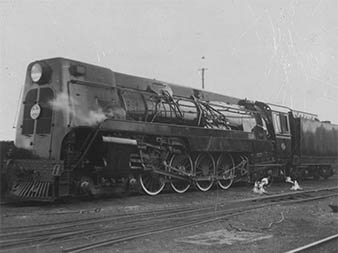
KB class
Number range: 965-970
Entered service: 1939
Last withdrawal: 1968
Tractive effort: 137.1kN
A variant of the KA class for use in the South Island, mainly on the Midland Line. One preserved by Mainline Steam.
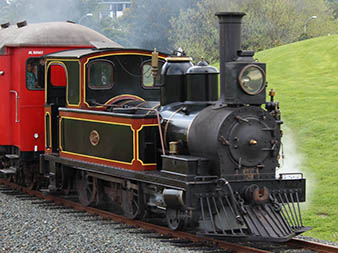
L class
Number range: unknown
Entered service: 1878
Last withdrawal: 1939 (NZR), 1970s (Portland)
Tractive effort: 21.8kN
Designed to provide an improvement over the F class on passenger services. Seven locomotives were rebuilt as the LA class, with the remaining three sold to the Public Works Department. These three remained in service at Wilson's Portland Cement until the 1970s. One each preserved by MOTAT, ShantyTown and Silver Stream Railway.

R class
Number range: unknown
Entered service: 1879
Last withdrawal: 1936
Tractive effort: 37.5kN
A class of single Fairlie locomotives, ideally suited for the fragmented system of railways in rough country that New Zealand had at the time. One preserved on static display at Reefton.

W class
Number range: 192-238
Entered service: 1889
Last withdrawal: 1959
Tractive effort: 57.3kN
The first locomotives to be built by NZR. One preserved by the Canterbury Railway Society.

WAB class
Number range: 687-798
Entered service: 1918
Last withdrawal: 1972
Power output: 750kW
Tractive effort: 99kN
A tank version of the AB class. One each preserved by Feilding and District Steam Rail Society and the Glenbrook Vintage Railway.
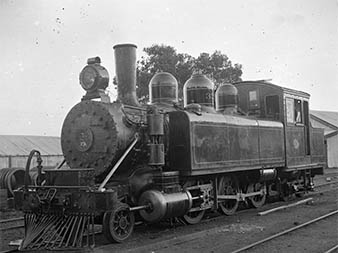
WD class
Number range: 316-327, 355-360
Entered service: 1901
Last withdrawal: 1936
Tractive effort: 70.2kN
A versatile class, based around the country and used on freight and suburban passenger services. One preserved at Ferrymead Railway, and the remains of another stored at the Rimutaka Incline Railway Heritage Trust.

WF class
Number range: 62, 379-398, 400-405, 430-438, 467-468, 842-844
Entered service: 1904
Last withdrawal: 1968
Tractive effort: 68.2kN
Mainly built for suburban services and branch line services. One each preserved at Steam Inc., Ferrymead Railway and the Nelson Railway Society.

WW class
Number range: 131, 449, 479-482, 486, 488-496, 556-561, 562 (later 667), 563-575, 638-647, 668-685
Entered service: 1913
Last withdrawal: 1969
Tractive effort: 75.2kN
A versatile locomotive, capable of handling almost any task while in service. Some were rebuilt with new builders with deeper fireboxes. One each preserved by MOTAT and the Silver Stream Railway, and two by the Glenbrook Vintage Railway.
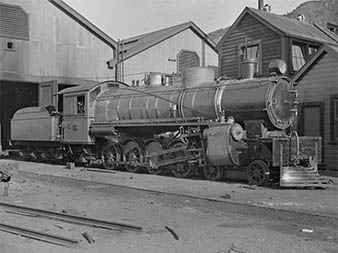
X class
Number range: 439-446, 588-597
Entered service: 1909
Last withdrawal: 1957
Tractive effort: 118.4kN
A heavy and powerful locomotive built for use in the mountainous central section of the North Island Main Trunk. One preserved by the Feilding and District Steam Rail Society.
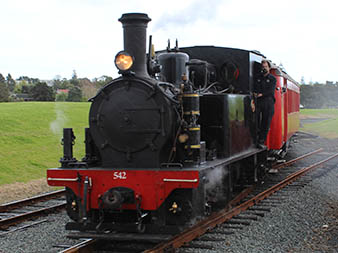
Y class
Number range: 542-544
Entered service: 1923 (PWD), 1938 (NZR)
Last withdrawal: 1945 (PWD), 1958 (NZR)
Tractive effort: 45.1kN
Built for use by the Public Works Department, and sold to NZR between 1938 and 1945. One preserved by MOTAT.
Diesel
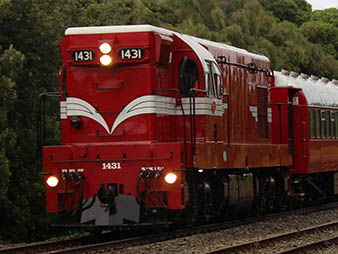
DA class
Subclasses: DAA, DAR
Number range: 1400-1545 (original), 11-996 (TMS)
Entered service: 1955
Last withdrawal: 1989
Power output: 1,060kW
Tractive effort: 140kN
With 146 locomotives built between 1955 and 1967, the DA class were the most numerous class of locomotive to ever operate in New Zealand, and were the first to displace steam locomotives in a large way. The locomotives are an A1A-A1A version of EMD's G12 model, slightly modified to fit New Zealand's loading gauge. 85 of the class were rebuilt as the DC class between 1978 and 1981. One each preserved by MOTAT, Feilding and District Steam Rail Society and a private owner, and three preserved by Steam Inc.

DBR class
Number range: 1199-1295
Entered service: 1981 (as DBR class)
Last withdrawal: 2017
Power output: 709kW
Tractive effort: 100kN
Rebuilt from the DB class between 1980 and 1982, the class was originally purchased for use on branch lines with light rails and the East Coast Main Trunk. 2 preserved at the Glenbrook Vintage Railway and 6 privately owned.

DC class
Subclasses: DCP
Number range: 4006-4951
Entered service: 1978 (as DC class)
Last withdrawal: (still in service)
Power output: 1,062kW (645C), 1,230kW (645E)
Tractive effort: 140kN
Rebuilt from the DA class between 1978 and 1983, the class is still in use today on freight services. Out of the original 85 locomotives built, only a handful remain in service as the class is slowly being phased out by KiwiRail. One each preserved by Steam Inc. and the National Railway Museum, and two each by the Glenbrook Vintage Railway and Mainline Steam.

DE class
Number range: 501-515 (original), 1308-1458 (TMS)
Entered service: 1952
Last withdrawal: 1989
Power output: 490kW
Tractive effort: 56.5kN
The first class of diesel-electric locomotive in service in New Zealand, albeit only in a shunter role. A small class of locomotives introduced as a heavy shunter, in service until the early 1980s. DE 508 was once part of New Zealand Rail's Heritage Fleet. One preserved by Dunedin Railways, and two each preserved by Silver Stream Railway, Glenbrook Vintage Railway and the Diesel Traction Group.

DF class (1954)
Number range: 1500-1509 (original), 1300-1309 (from 1965)
Entered service: 1954
Last withdrawal: 1975
Power output: 1,100kW
Tractive effort: 171.3kN
Officially the first class of diesel-electric locomotive in service in New Zealand, and the first diesel mainline locomotive. The class was the first to begin displacing steam locomotives during their service in the North Island, although suffered from reliability issues. One preserved by the Diesel Traction Group.
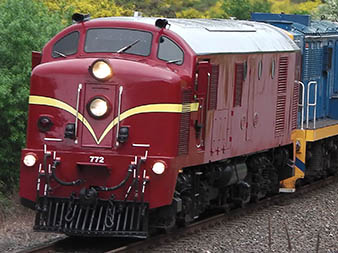
DG class
Subclasses: DH
Number range: 750-791 (original), 2007-2497 (TMS)
Entered service: 1955
Last withdrawal: 1983
Power output: 560kW
Tractive effort: 115.7kN (DG), 129kN (DH)
Essentially a half-sized version of the DF class with a single cab instead of one at each end. South Island locomotives were initially classified DH instead as they were fitted with adjustable bogies allowing a higher maximum axle weight and tractive effort. Ten locomotives were upgraded with a new cab between 1978 and 1980. One each preserved by Diesel Traction Group and on private property in Oamaru, and two by the Weka Pass Railway.
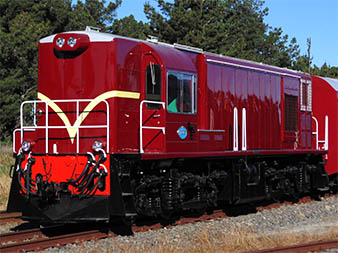
DI class
Number range: 1100-1104 (original), 1808-1843 (TMS)
Entered service: 1966
Last withdrawal: 1989
Power output: 750kW
Tractive effort: 131.2kN
Purchased as an alternative to the DB class for use in the South Island, however funding by the World Bank for the DJ class prevented more of the class from being ordered. One preserved by Diesel Traction Group.

DJ class
Number range: 1200-1263 (original), 3009-3689 (TMS)
Entered service: 1968
Last withdrawal: 1991
Power output: 672kW
Tractive effort: 128kN
Funded with a modernisation loan from the World Bank, the DJ class was purchased to replace steam locomotives in the South Island. The class is one of just three in New Zealand to feature a Bo-Bo-Bo wheel arrangement, reducing the axle weight allowing the class to run on lightly laid rails on secondary routes. Seven preserved by Dunedin Railways, with another two preserved by Mainline Steam.
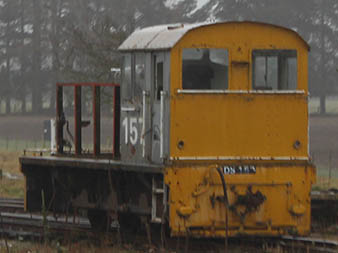
DS class
Number range: 200-215
Entered service: 1949
Last withdrawal: 1984
Tractive effort: 63.6kN
Purchased due to the need for a shunting locomotive more powerful than any of the TR class. Another two built for the Whakatane Board Mills Line. One each preserved by Steam Inc., Ocean Beach Railway, Glenbrook Vintage Railway and a private owner, and two by Midland Railway Heritage Trust. One additional locomotive has been turned into a Steampunk display in Oamaru.
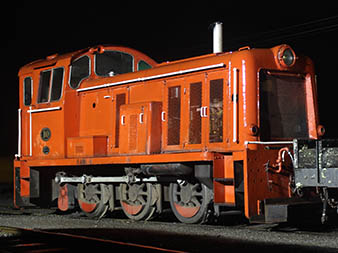
DSA class
Number range: 216-276 (original), 209-822 (TMS)
Entered service: 1953
Last withdrawal: 1990
A slightly heavier version of the DS class. Built by four different manufacturers from 1953. A large number were purchased by industrial users after withdrawal due to their high power rating. Many of the class are in service on heritage railways around the country.
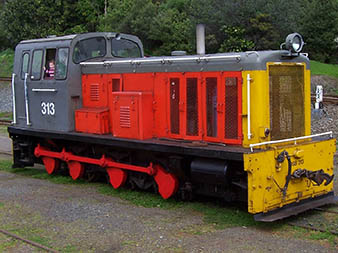
DSB class
Number range: 300-327 (original), 1003-1290 (TMS)
Entered service: 1954
Last withdrawal: 1989
Power output: 195kW
A slightly heavier version again of the DSA class. One preserved by Mainline Steam.
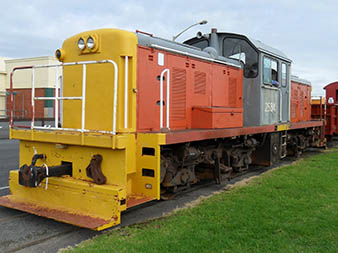
DSC class
Number range: 400-469 (original), 2000-2759 (TMS)
Entered service: 1958
Last withdrawal: (still in service)
Power output: 315kW
Tractive effort: 46kN
Purchased as a heavy shunter to replace smaller DS and DSA class shunting locomotives and smaller steam locomotives. A second version was built by NZR powered by two Leyland diesel engines instead of the Rolls-Royce engines. One original BTH locomotive preserved at Alliance Pukeuri Works, one each of an NZR-built locomotive preserved at Alliance Lorneville Works, Gisborne City Vintage Railway and Goldfields Railway, and two by Waitara Railway Preservation Society.
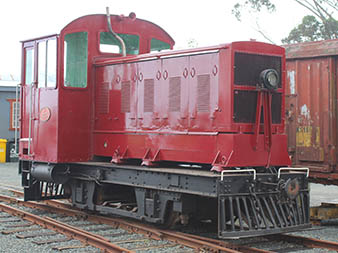
EB class
Number range: 25-29 (original), 1809-1821 (TMS)
Entered service: 1925
Last withdrawal: 1980
Power output: 23kW
Originally built as a battery-electric shunt locomotive, the class was converted into diesel-electric locomotives in the 1950s. One each preserved (as diesel-electric) by MOTAT and Silver Stream Railway
Electric
Locomotives
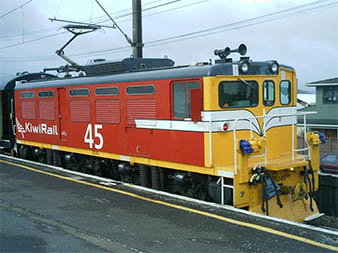
EA (later EO) class
Number range: 1-5 (original), 39-74 (TMS)
Entered service: 1968 (Otira), 2008 (Wellington)
Last withdrawal: 1997 (Otira), 2011 (Wellington)
Power output: 960kW
Built for use through the Otira Tunnel between Arthur's Pass and Otira, banking trains on the steep 1 in 33 grade through the tunnel. This class replaced the original EO class from 1923. After electrification was removed in 1997, the class was withdrawn and placed into storage. In 2008 three locomotives were refurbished to top and tail refurbished SE carriages on the Wellington metro network, as an interim measure before the arrival of the Matangi units. The locomotives were withdrawn again in 2011 after reliability problems and the introduction of sufficient Matangi units. One preserved by the National Railway Museum.
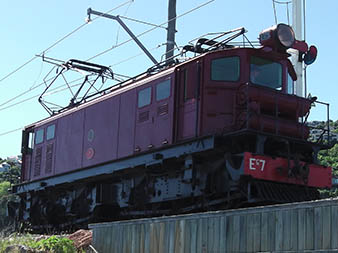
EC class
Number range: 7-12
Entered service: 1929
Last withdrawal: 1970
Power output: 888kW
Replaced steam locomotives through the Lyttelton rail tunnel, and handled all trains between Christchurch and Lyttelton during their service life. Replaced with diesel locomotives from 1967-1970. One preserved by the Ferrymead Railway.

ED class
Number range: 101-110 (original), 15, 21 (TMS)
Entered service: 1938
Last withdrawal: 1981
Power output: 925kW
Tractive effort: 80kN
Introduced for service in Wellington, and used mainly on passenger trains. The first eight locomotives had a steam boiler for heating carriages, before being removed due to reliability issues. Eight withdrawn and scrapped in 1969, with the remaining two kept in occasional service until 1981. One each preserved by the Silver Stream Railway and Canterbury Railway Society.

EO class (1923)
Number range: 2-6
Entered service: 1923
Last withdrawal: 1968
Power output: 510kW
Tractive effort: 63kN
Purchased for use through the Otira Tunnel from its opening in 1923, as the tunnel was too long and steep for steam locomotives. The class was replaced with the EA class in 1968. One preserved by the Canterbury Railway Society.
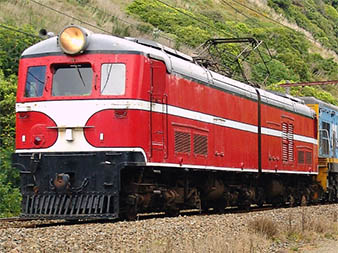
EW class
Number range: 1800-1806 (original), 107-171 (TMS)
Entered service: 1952
Last withdrawal: 1987
Power output: 1,340kW
Tractive effort: 104kN
Introduced for use in Wellington to replace the ED class on passenger services, and for a time was the most powerful locomotives in New Zealand. One each preserved by the Canterbury Railway Society and Mainline Steam.
Electric Multiple Units
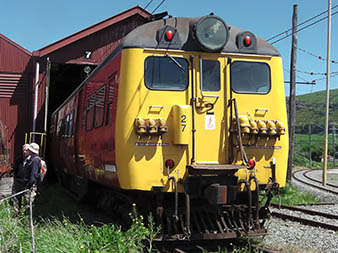
DM class
Number range: 1-49 (DM, original), 55-562 (DM, TMS)
Entered service: 1938
Last withdrawal: 2012
Power output: 447kW
The first class of electric multiple unit introduced to New Zealand, built for service in Wellington. Three batches were built between 1938 and 1954, for use on the Johnsonville Line then on services to Paekakariki and Upper Hutt. The third batch survived in service until 2012, as the EM class could not use the Johnsonville Line. One set preserved by the National Railway Museum, Canterbury Railway Society, Wellington Heritage Multiple Unit Preservation Trust, a cafe in Paraparaumu, and on private property in Nelson. A number of D class trailers are also located on private properties around the country.

EM class
Number range: 1004-1528 (EM), 3004-3528 (ET)
Entered service: 1982
Last withdrawal: 2016
Power output: 400kW
Introduced in 1982 to replace the oldest of the DM class and all carriage trains. Although not operated on the Johnsonville Line due to being out of gauge and having insufficient braking power, the class was the mainstay of the fleet from their introduction until the arrival of the Matangis in 2010. One each preserved by the Canterbury Railway Society and the Wellington Heritage Multiple Unit Preservation Trust.
Images originally published by nzrailphotos.co.nz are released under the Creative Commons Attribution-NonCommercial-NoDerivatives 4.0 International licence.
Image of WAB 794 taken by Joseph Christianson and released under the Creative Commons Attribution-Share Alike 2.5 Generic licence.
Image of DI 1102 taken by Matthew Bell-Hills and released under the Creative Commons Attribution-Share Alike 4.0 International licence.
Image of EO 45 taken by Vardion and released under the Creative Commons Attribution-Share Alike 4.0 International licence.
Image of ED 103 taken by Yak52fan and released under the Creative Commons Attribution-Share Alike 3.0 Unported licence.
Image of EO 3 taken by Yak52fan and released under the Creative Commons Attribution-Share Alike 3.0 Unported licence.
Image of EW 1805 taken by Alan Wickens and released under the Creative Commons Attribution-Share Alike 2.5 Generic licence.
